We celebrate many religious festivals in Trinidad and Tobago. Religious festivals are festivals celebrated by groups in order to remember a particular past event. Here are are a list of these festivals and their links. These festivals are celebrated throughout the two islands. They are marked as local or national holidays. These festivals could be categorized mainly as Christian, Islamic, Hindu, or African-Christian.
Therefore, these festivals are very important for the people of Trinidad and Tobago. They unify families, friends and society. When we celebrate a festival we are joyful and lively. Our religious festivals proclaim our belief in God. That is why we are always happy to greet each other during these times. We may bid each other: Happy Divali, Happy Christmas, Happy New Year. These festivals help us build better and stronger relationships in life.
CONTENTS:
Ramleela
This is an occasion that takes place ten days before Divali. Ramleela is a story that is dramatized in the public savannahs.

The story of Ramleela is a dramatic folk re-enactment of the life of Rama according to the ancient Hindu epic Ramayana. After the enactment of the legendary war between Good and Evil, the Ramlila celebrations climax in the Dussehra (Dasara, Vijayadashami) night festivities where the giant grotesque effigies of Evil, such as of demon Ravana, are burnt typically with fireworks.
Divali
Divali is the Hindu festival of lights. It symbolizes the spiritual “victory of light over darkness, good over evil, and knowledge over ignorance“. It is celebrated on the 10th of the month of Kartik (October to November). It is a public holiday. The festival commemorates two special occasions: the return of Lord Rama and his wife Sita and the honour of Mother Lakshmi, the Goddess of Light.
Divali is a time of prayer and worship for Hindus. Devotees fast by abstaining from the eating of meat and drinking alcoholic beverage.

In the lead-up to Divali, celebrants will prepare by cleaning, renovating, and decorating their homes and workplaces with diyas and rangoli (oil lamps or candles).

They celebrants will also wear their finest clothes, offer puja (worship) to Lakshmi, light fireworks, and partake in family feasts. Mithai (sweets) and gifts are shared.


PHAGWA
Phagwa or Holi is a Hindu festival, also known as “festival of colours“. “festival of spring“, or the “festival of love“. The festival signifies the victory of good over evil. During this period Hindus fast and pray, abstaining from meat and alcohol, and pray.
Phagwa celebrates the arrival of spring in India. It is the time to meet others, play, dance, laugh, and sing. A special song, called “chowtal” is sung during the course of this festival. This festival has a great religious significance to Hindus. It also promotes good health.
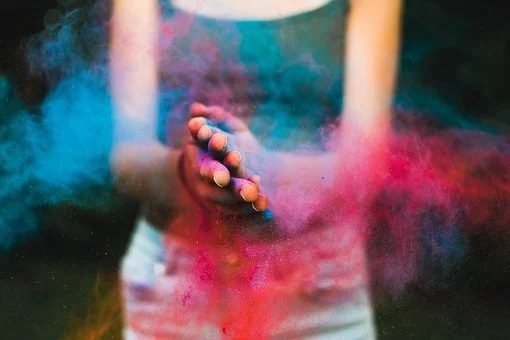
There are two stories that explain Phagwa. The first tells of Prahalad, son of the evil king Hiranyakashipu, who wanted to stop his son and the people in the kingdom from worshiping God. Another story, where the evil king Hiranyakashipu ordered his sister Holika, who had powers to protect her from fire, was ordered to take the King’s son and burn him in a huge fire.
Ash Wednesday Lent

Lent is a solemn religious observance in the Christian liturgical calendar. It begins on Ash Wednesday and ends approximately six weeks later (46 days), before Easter Sunday. It origins is from the ancient Jewish tradition of penance and fasting. Generally, Ash Wednesday is right after Carnival Monday and Tuesday.

On Ash Wednesday, ashes are placed on the forehead of Roman Catholics and all who are present at the Mass. The ashes symbolize the dust from which God made us. “Remember that you are dust, and to dust you shall return” says the priest. The ashes are made from the previous year’s palm Sunday Mass.

Ash Wednesday marks the beginning of Lent, a season of penance, reflection, and fasting which prepares us for Christ’s Resurrection on Easter Sunday, through which we attain redemption.
Good Friday Easter
The Easter weekend begins with Good Friday, a Christian holiday commemorating the crucifixion of Jesus and his death at Calvary. Good Friday is also known as Great Friday, Holy Friday and Black Friday. It is observed with fasting and church services. The date of Good Friday varies from year to year.

The day is significant because Christians believe that Jesus Christ died on Friday, celebrated as Good Friday; and rose from the dead on Sunday, celebrated as Easter Sunday.

On Good Friday, Christians observe this special day in church; take part in the Holy Communion (Eucharist). It is customary to eat fish and provision for lunch, and hot cross buns at this time.

Easter activities include: kite flying, Bonnet Parades, and Easter egg hunt.

CORPUS CHRISTI DAY

Corpus Christi is also known as the Solemnity of the Most Holy and Blood of Christ. It is a Catholic, Anglican, and Western Orthodox liturgical solemnity. On this day, the faithful celebrate the real presence of the Body and Blood, Soul and Divinity of Jesus Christ in the element of the Eucharist. The Eucharist means thanksgiving.


All Saint’s Day
All Saint’s Day (also known as All Hallow’s Day, Hallowsmas, The Feast of All Saints, Solemnity of All Saints) is a Christian festival celebrated to honor all the saints, known and unknown. It is celebrated on November 1st.
The day is celebrated where people visit cemeteries and graves where they offer flowers, candles and prayers or blessings for the graves of loved ones. For Catholics the day commemorates all those who have attained the beatific vision in heaven.
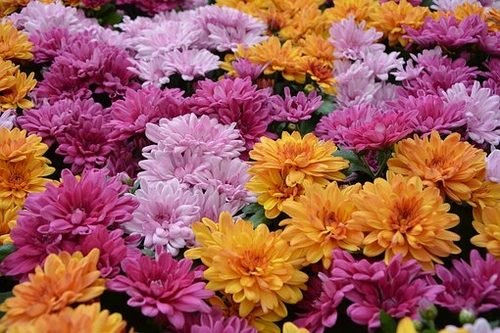
All Soul’s Day
All Souls’ Day (also known as the Commemoration of All the faithful Departed and the Day of the Dead) is a day of prayer and remembrance for the souls of those who have died. This occasion is observed on November 2nd, a day after All Saint’s Day, by some Christians denominations and Hindus to remember the deceased loved one in various ways. The Roman Catholics keep mass in church and then proceed to the cemetery to light candles on the graves. Some people light candles at home as well.

Santa Rosa festival
The Santa Rosa Festival was started by the Caribs of Arima over 300 years ago. The festival takes place in August every year.

The festival began with three Caribs who are believed to have seen a manifestation of Rose of Lima – the first New World person to be declared a Saint by the Roman Catholic Church. The feast day for the saint is on August 20th.
The Carib Community has been able to retain traditional survival systems and practices including the cultivation of cassava, its processing methods, and farming implements.
In the week leading up to the festival, tribute is paid to the first peoples of the New World. The Festival is intended to expose their culture to the nation.
The ceremonies include the crowning of the Carib Queen, an elder matron of their community, who performs the role of focusing their heritage and traditions; a church procession and performance of some of their traditional and ritual activities – smoke ceremonies and prayer; preparation of cassava bread (Source).
Christmas
Christmas (or Feast of the Nativity) is an annual festival commemorating the birth of Jesus Christ. It is observed on December 25. This feast central to the Christian Advent season.
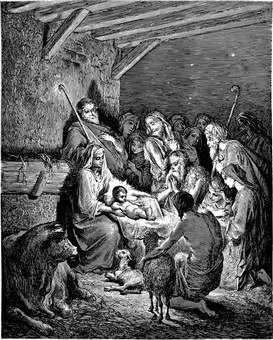
Christmas is celebrated all over the world, but differently. Some go to church, others consider it a time for merriment and singing. In Trinidad, we sing Christmas caroles and parang music. Below is one of the popular parang songs for this season.
Christmas is a time for sharing, gift-giving, joy and merriment.

Churches build crèches and mall are decorated with lights and Christmas trees. People enjoy preparing for the day with food as well.
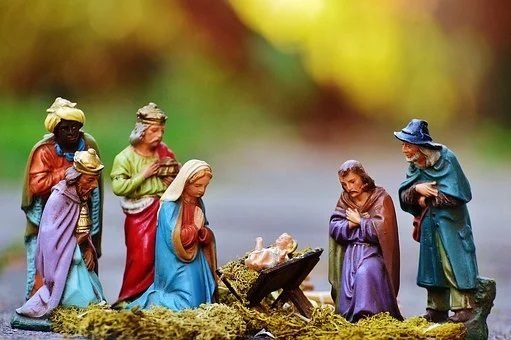
Spiritual Baptist Liberation Day

The Spiritual Baptist Liberation day is a public holiday celebrated on March 30th every year. The day commemorates the freedom of the Spiritual Shouter Baptist religious group the freedom to build a church, hold worship and practice their religious beliefs.
The religious group were, from 1917 to 1951, forbidden by the colonial government. Their reasons were that the group made too much noise during their service. Their loud singing and bell ringing were disturbing the peace. The prohibition made it difficult for the the Spiritual and Shouter Baptists to erect or maintain any “Shouter house” or holding meetings. However, the religion survived. A number of leaders, such as Tubal Uriah Butler, Elton George Griffith, champion the cause to remove the prohibition.
Finally, on 30 March 1951 the ordinance was repealed and the Spiritual Baptists were free to practice their religion. In 1996, the former Prime Minister Basdeo Panday announced that 30th of March be a public holiday. The holiday is celebrated on the anniversary of the Repeal of Shouter Prohibition Ordinance. The group was also granted 25 acres of land in Maloney to build churches, schools, and a spiritual park.
The day is celebrated across the country. The faithfuls dress in their distinctive garb and head wear. They march through the streets, singing and chanting, clapping and playing drums.

EID-UL-FITR

Eid-ul-Fitr is a muslim festival that marks the end of fasting during the month of Ramadan (a holy month of fasting, introspection and prayer). Muslim, who are in good health, are expected to fast from dawn to sunset. On this day to go to the mosque, offer prayers, feast, distribute gifts, visit friends and relatives.

HOSAY
Hosay is a distorted version of the name “Hussein”. It is observed with a parade full of colourful tadjahs. The celebration came to Trinidad and Tobago by indentured workers who came to work on the sugar plantations. The first observance of Hosay was in 1847 in San Fernando, Trinidad.
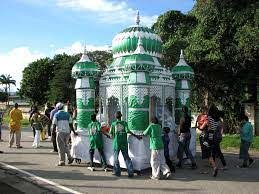
Hosay is a commemorative event, narrated over ten days, of the martyrdom of Hussein (Hussain), the grand son of the Prophet Mohammed, at the Battle of Kerbala in Persia. During the month Muharram, Muslims grieve at the circumstances of the slaughter of Hussein, his family and companions on their way to Kufa. He was killed because he would not pledge allegiance to Yazid, the second son of Umayyad Caliph. They morn his death for 10 days. On the 10th day, the slaughter is commemorated in a dramatic procession on the streets. (Source)
Worksheet
Document contains 17 pages


